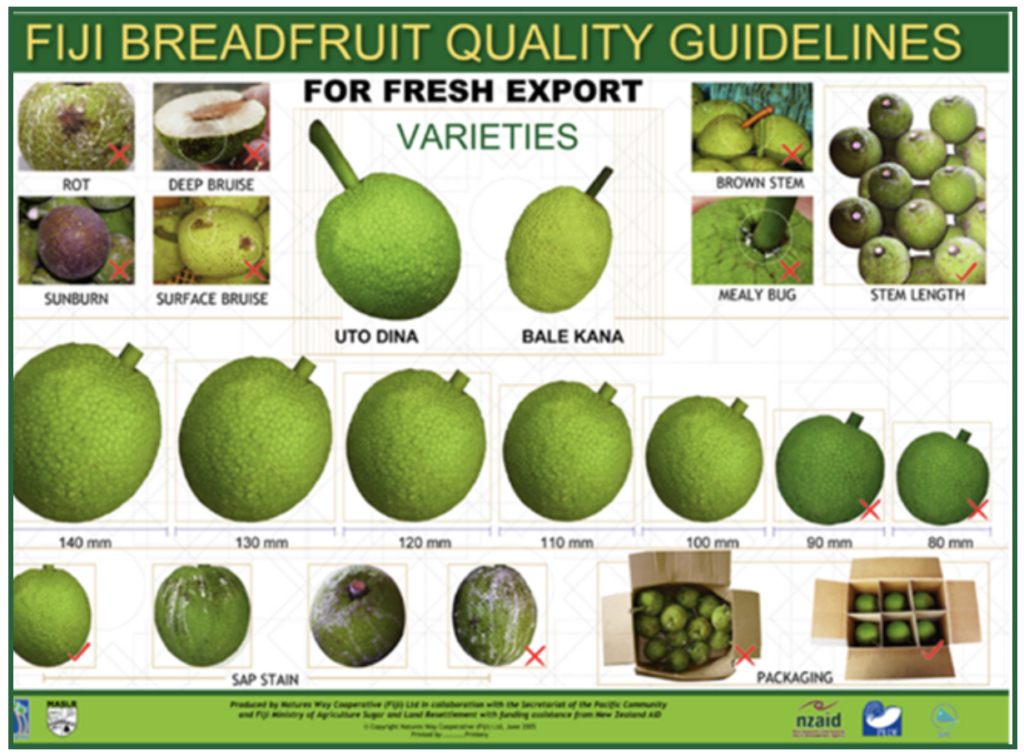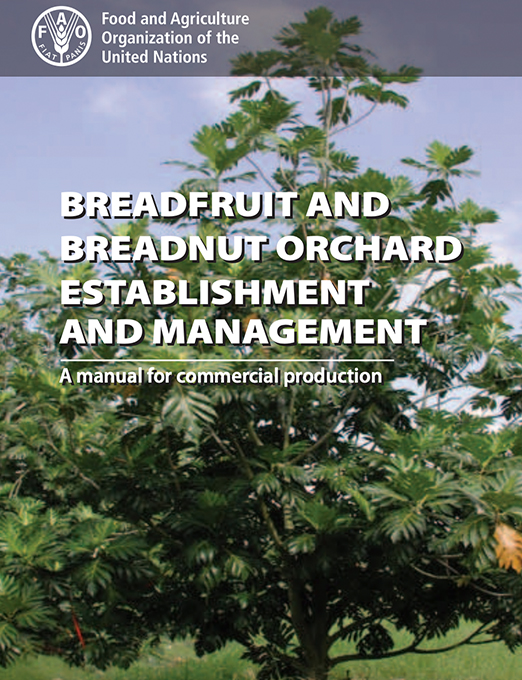Risk Assessment
Cultivation of a long-term tree crop for the export market is not without risks – though obviously planting complementary crops with that tree crop does mitigate risk to a large extent.
How vulnerable is my orchard to climate extremes?
The most obvious and serious risk factor for any tree crop in the South Pacific Islands is cyclones. The expectation is that cyclones are becoming intense, if not more frequent, due to climate change. Module 1 discussed the resilience of breadfruit to climate change and to extreme climatic events. The expectation is that this tree crop will be more resilient than most other crops to climate change. Management of the tree and the orchard significantly improves the tree’s rate of recovery from any cyclone damage. However, it should be assumed that there will be fruit loss due to cyclones and in some of those years the losses may be substantial. These losses can be simulated in your financial model. Below we show the consequences due to cyclones of: 50% loss of fruit in year 3; a 90% loss in year 5; and a 50% loss in year 8.

As the result of these fruit losses the average annual gross margin per acre falls from FJD 8,419 to FJD 7,579; and the average annual return per day of household labour falls from FJD 185 to FJD 144. Under such circumstances, breadfruit would remain significantly more remunerative than alternative land uses such as sugar cane (which are often more adversely impacted by cyclonic winds and flood damage).
A prolonged drought during the breadfruit trees first 18 months of growth also poses a major risk. Once the tree is fully established, the impact of drought is considerably reduced – although an extended severe drought in dry/intermediate rainfall zones will impact on productivity. Thus, you may need to consider the installation of appropriate irrigation systems – particularly if you want to intercrop with vegetables and depending on your site.
For further information on breadfruit and climate change, including cyclones see:
- McGregor A, Taylor M, Bourke RM, and Lebot V, 2016 Vulnerability of staple food crops to climate change In: Vulnerability of Pacific Island agriculture and forestry to climate change, Taylor M, McGregor A, Dawson B, Eds. Pacific Community, Noumea, New Caledonia
- McGregor AM, Tora LD, and Lebot V, 2016. Planting breadfruit orchards as a climate change adaptation strategy for the Pacific islands. Acta Hortic. 1128, 55-66
Market access issues with fresh horticultural exports
If you are considering exporting breadfruit then fruit fly control must be taken seriously because of the potential impacts flowing from an importing country detecting any fruit fly eggs or larvae. Fruit fly eggs or larvae may be present on some fruit if growers do not follow the correct procedures. HTFA treatment will kill the eggs and larvae. However, if New Zealand Quarantine authorities discover just one egg, “dead or alive” verification, which takes three days, will be required. Fiji had been exporting HTFA treated fresh breadfruit to New Zealand since 1997, with no quarantine issues encountered until May 2019, when breadfruit exports were suspended after fruit fly larvae was discovered in an oversized fruit. This was the consequence of a rogue exporter sourcing fruit that was significantly larger than the specified size limit from farmers who were not registered under the bilateral quarantine agreement. The offending exporter has his licence cancelled and stricter requirements relating to breadfruit variety and size and field sanitation are being drafted. The expectation is that the suspension will soon be lifted – however, in the meantime fresh breadfruit exports have been stopped – to the detriment of farmers and other exporters. Farmers have no market if exporters decide to suspend breadfruit shipments therefore diligence is required on the part of farmers and exporters to ensure that fruit fly procedures are strictly adhered to.
Fortunately, other markets remain for the breadfruit orchards. The fruit can either be sold for freezing prior to export or to the local fresh breadfruit market. It is expected that these market access risks will be further ameliorated as the breadfruit processing industry develops. You will need to consider what you might be able to do to reduce the impact of any potential future market loss. Appropriate intercropping is one such strategy. It was demonstrated in Fiji that by incorporating cassava as an intercrop in a breadfruit orchard, it was estimated that the farm can earn an average of FJD 1,545 per annum over the first 5-years.
The transition from firm to soft breadfruit happens quickly (sometimes in a matter of hours). If softening happens when breadfruit is still with the wholesaler or retailer, claims for compensation can be expected against the exporters and future orders may be curtailed. To minimize the risk of fruit softening in the market, growers and exporters need to closely follow the recommended guidelines for breadfruit production and export. These guidelines are presented in the Fiji Breadfruit Quality Guidelines (Fig. 14) produced by Nature’s Way Cooperative, who operates Fiji’s HTFA.

Figure 14: Fiji breadfruit quality guidelines
Pest and diseases
Breadfruit grown as a traditional crop is known to have minimal incidence of pests and diseases. The susceptibility to fruit fly in most Pacific Island countries is an important exception, (although this is more a quarantine risk rather than a production issue). However, the susceptibility to pests and diseases could be expected to increase when the breadfruit is grown as an orchard crop. This risk can be ameliorated if appropriate agroforestry measures such as alley cropping and field sanitation (removing overripe fruit) are adopted.
Featured Resources

